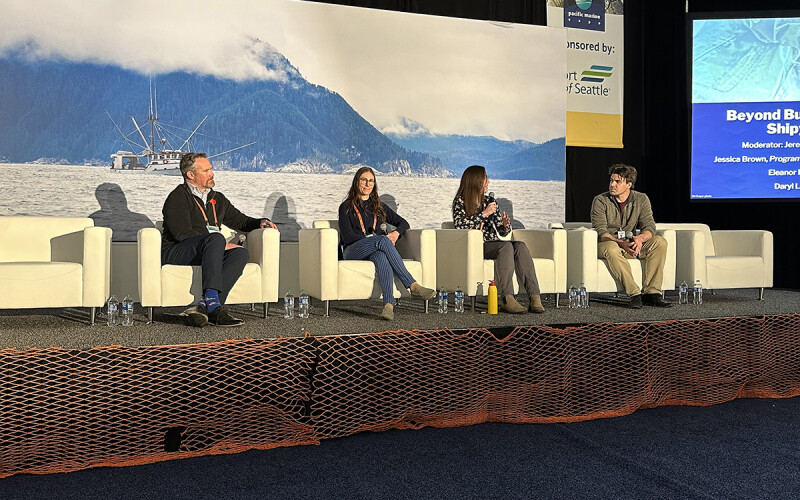On Washington State’s Puget Sound, maritime industries face mounting environmental challenges. There are demands for cleaner air, reliable ferry service, restoring fisheries, and protecting endangered whales.
Then, pile on waterfront development, where new condo residents don’t want glaring lights and truck traffic. Not far behind are traditional customers – ship, workboat, and fishing vessel operators who themselves must adapt to changing priorities and need help.
How to make that all work was the subject of a seminar on sustainability in shipyard and port operations at the Pacific Marine Expo in Seattle.
The Pacific Northwest is a booming market for Seaspan Shipyards in British Columbia, where the workforce has grown from 50 people in 2011 to more than 4,000 at its yards. The company has plenty of work from Seattle-based fishing and commercial vessels, with contracts booked to 2040, said Daryl Lawes, senior management environment at Seaspan.
The company recently received permit approval from the Vancouver Fraser Port Authority (to extend its North Vancouver drydock facilities to increase capacity by 30 percent and service additional vessels.
To get the permit, Seaspan is “subject to 61 conditions that address the local impacts of noise, air emissions, and lighting,” according to a company statement about the expansion. “Seaspan has committed to implementing several mitigation measures to its existing operation, as well as to the expanded facilities.”
Part of that is tied to the fact that shipbuilding has new neighbors in Vancouver.
“Those condos aren’t cheap,” said Lawes. Quality of life issues such as traffic, noise and air quality are inevitably a challenge of co-existing with other users.
“To do that, we have to be a responsible company,” said Lawes.
The title of their seminar was “Beyond Buzzwords.” That was the caution offered by panelists Lanes; Jessica Brown, program manager for environment and sustainability for the Port of Seattle; and Eleanor Kirtley, senior program manager for Green Marine, the North American environmental certification program.
Catchy word sets such as “zero emission” can generate high expectations but little in concrete, deliverable approaches to solving problems, they said.
One way to go is using “performance-based metrics” using data to measure performance for new approaches, said Brown of the Port of Seattle. Port planners use that kind of analysis that looks at cost, benefit, environmental impact, and matters of equity for port users and the public.
Another need is for port operators and users to communicate about needs and possibilities, said Brown. One example in Seattle was a tenant who was paying major money to bring in sewage trucks to service vessels, she said. After learning about that need, and the expense, port planners were able to incorporate new pump-outs into pier improvements.
Along with safeguarding water quality, the improvement brough environmental wins in reduced crowding on the waterfront and less traffic and diesel emissions.
“We’re really good at keeping older pieces of equipment going,” said Lawes. Increasingly businesses are faced with decisions on whether to retrofit or go with newbuild, but those kind of businesses decisions are dependent on customers wishes and government aid, he said.
The trends are in motion. For decades California’s moves to improve air quality have driven emission reductions across the U.S. auto industry, and now the state’s moves to reduce air pollution around its ports are likewise having an effect of encouraging low-emission vessel designs for ferries and tugboats. Globally the shipping industry is under broad pressure for decarbonization, even if just the first steps toward reducing the burning of heavy bunker oils.
“There’s a cost in not acting” as more shipyard customers decide they too need to adapt, said Kirtley.
Lawes recalled how Seaspan lost a potentially big contract a few years ago from a customer over “their ambitions of what the wanted to see” in decarbonizing their maritime business. “We lost millions, so there is a cost there for sure.”







